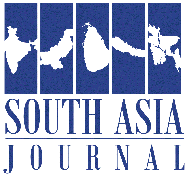 ANUTTAMA BANERJI
ANUTTAMA BANERJI
Ambition for India-Australia ties has not wanted for promises in recent years, but the practical basis for cooperation has sometimes appeared lacking. That took a welcome step towards changing in recent weeks after Indian Defence Minister Rajnath Singh met his Australian counterpart Richard Marles in New Delhi, following on from officials-level talks earlier in the year focused on advancing military interoperability.
Giving heft into the India-Australia defence partnership means leveraging their existing agreements – especially the Mutual Logistics Support Arrangement that was signed in 2020. This is a bespoke agreement to facilitate advanced military engagement and responsiveness to humanitarian disasters and emergencies.
It is also a pivotal agreement that can broaden the existing security partnership between the countries. It could potentially permit both India and Australia to use one another’s facilities during impending contingencies such as a potential Taiwan Strait crisis. It would also enable India to expand its presence beyond the Indian Ocean region to the wider Indo-Pacific, an area that India now claims is its strategic geography.

I previously wrote for The Interpreter that the conclusion of the logistics arrangement had provided the two militaries with a convenient tool to cooperate at a time when an imminent threat from China was evident and obvious. However, this agreement goes beyond that – responding to a China threat is just a by-product. The arrangement truly expands the scope of the India-Australia partnership to act as a confidence building measure.
The most visible use of this agreement would be in the form of underway replenishments – the transfer of liquid and/or solid cargo between two ships while underway during operations at sea for prolonged periods. The operationalisation of a similar agreement has already enabled refuelling of US aircraft on Indian soil, so Australia can also undertake such exercises on Indian soil if required in the near future.
At a time when “interoperability” is a buzzword, ensuring that the agreement is used to its maximum potential could give a fillip to this concept.
This agreement between India and Australia is intended to enhance the options available to both countries, and this can be achieved by the development of dual-use facilities. For example, both countries could leverage the agreement to build collective storage capacities to keep communication equipment and engineering assets in each other’s countries – perhaps in Andaman and Nicobar Islands in India or the Christmas and Cocos (Keeling) Islands in Australia. Similarly, the agreement could also be used to acquire spare parts during emergencies – a striking recent example from the French Armée de l’Air et de l’Espace offers an illustration, having obtained a spare part needed to repair a French Rafale from the Indian Air Force.
Dialogue can also be advanced on logistics exchange with seminars and conferences. Such exchanges feed into the existing defence ecosystem, enabling the creation of resilient supply chains that are better placed to deal with incoming contingencies. The operationalisation of such agreements enables a more fruitful working relationship between the two militaries – strengthening wider ties between the countries.
At a time when “interoperability” is a buzzword, ensuring that the agreement is used to its maximum potential could give a fillip to this concept in the operational domain. Australia has called for the advancement of interoperability with all its partners in successive defence papers – it is time to actually do it. Ties with India can be a leading example here.
The article appeared in the lowyinstitute
